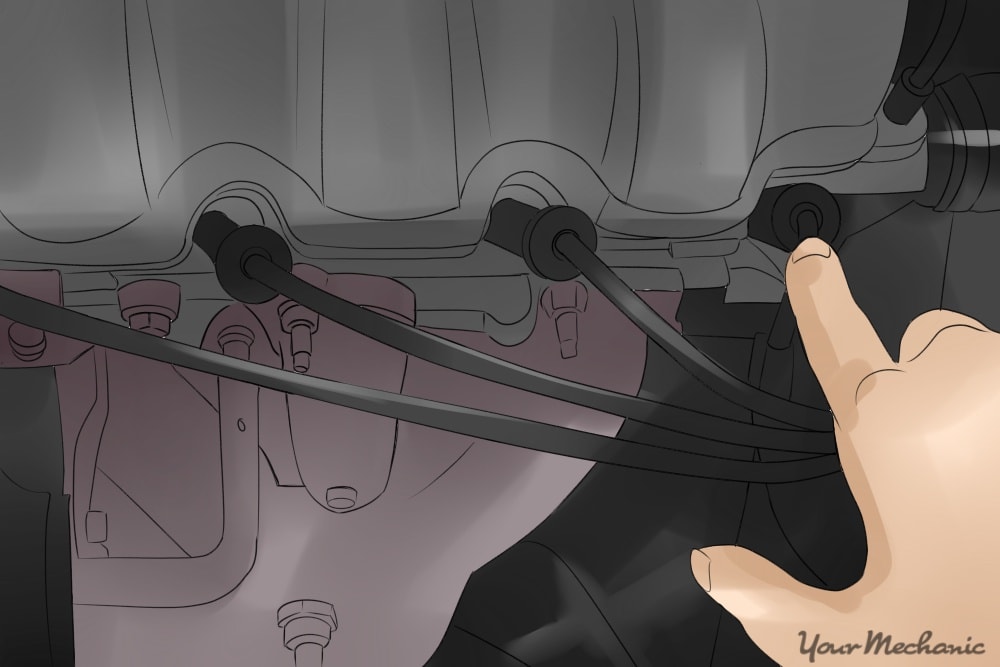

The points and condenser on your vehicle are responsible for the timing and strength of the signal sent to your spark plugs to ignite the fuel and air mixture. Electronic ignition systems have since revolutionized the points and condensers system, but for some it is all about the heirlooms.
Located inside of your distributor cap, the points are used as a switch for the current being sent to the ignition coil. While the condenser inside of the distributor (sometimes located outside or next to it) is responsible for sending a more powerful and cleaner spark, and to help preserve the contacts on the points.
As complicated as the system might be, changing them and setting them doesn’t involve much effort. Signs that your vehicle’s points and condenser need to be replaced include failure to start, misfiring, misadjusted timing, and rough idling.
Part 1 of 1: Replacing a points & condenser
Materials Needed
- Feeler gauges
- Replacement set of points
- Replacement condenser
- Screwdriver (magnetic preferably)
Step 1: Disconnect battery. Disconnect negative battery cable to cut power to the vehicle.
- Note: For safety reasons when working on your vehicle, always disconnect battery when working on electrical systems.
Step 2: Locate and remove distributor cap. Open the hood and locate the distributor cap. It will be small, black and round (nearly always). It will be located near the top of the engine, with ignition cables running from it.
Remove the cap by unclipping the retaining clips around the perimeter. Set cap aside.
Step 3: Disconnect and remove the set of points. To remove the set of points, locate and disconnect the terminal leads at the back of the points. To disconnect, remove bolt or fastener holding the lead into the terminal.
Once the set of points has been disconnected, you can remove the retaining bolt. Remove the bolt, on the side of the points themselves, holding the set of points onto the distributor base. The points will then lift out.
Step 4: Remove condenser. With the leads and contact points disconnected, the condenser will also be disconnected from its wiring and ready to be removed. Using your screwdriver remove the retaining bolt holding the condenser to the base plate.
- Note: If the condenser is located outside of the distributor the removal process is exactly the same. In this case you will most likely have a second lead connecting to its own terminal that you will have to disconnect as well.
Step 5: Install new condenser. Place the new condenser in place and route its wiring under the plastic insulator. Hand tighten down retaining screw to the base plate. Route leads under the plastic insulator.
Step 6: Install new points set. Reinstall the new set of points. Secure the hold down or retaining screws. Reattach the lead from the points set to the distributor’s terminal (include the lead from the condenser if they utilize the same terminal).
Step 7: Grease distributor. Once the points have been installed, grease the distributor shaft.Use a small amount, but enough to adequately lubricate and protect the shaft.
Step 8: Adjust point gap. Using your feeler gauges, adjust the gap between points. Loosen the retaining screw. Use feeler gauge to adjust gap to proper spacing. Finally hold gauge in place, and again tighten retaining screw.
For proper spacing of the points, check the owner’s manual or repair guide. If you do not have these available a general rule of thumb for V6 engines is.020, and .017 for V8 engines.
- Note: Assure yourself after you have tightened down the retaining screw, that your gauge is still where you need it to be.
Step 9: Reassemble distributor. Reassemble your distributor. Do not forget to put your rotor back if you chose to remove it from the distributor during this process. Return clips to closed position and lock distributor cap into place.
Step 10: Restore power and test. Restore power to the vehicle by connecting the negative battery cable. Once power is restored, start the vehicle. If the vehicle starts and idles properly for 45 seconds, you may test drive the vehicle.
Ignition systems in your vehicle are vital for operation. There was a point in time when these ignition components were serviceable. Today’s ignition systems are completely electronic and usually do not have serviceable parts. However, replacing the serviceable parts on older models adds to the value of their rebuild. Keeping up maintenance with these fast moving mechanical parts is vital for the operation of the vehicle. If the process of replacing your points and condenser is too prehistoric for you, count on a certified technician to replace your points condenser at your home or office.



